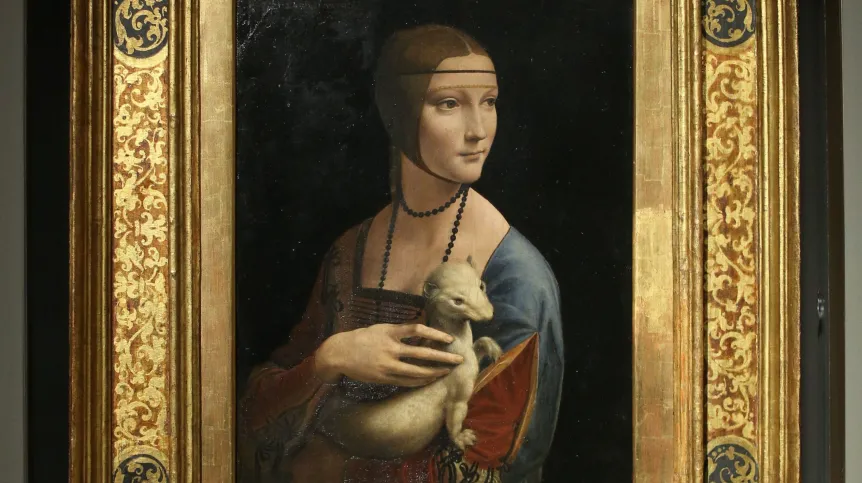
Kraków museum employees and scientists, in cooperation with partners from Ljubljana (Slovenia), examined the scent of Leonardo da Vinci's famous work - The Lady with an Ermine - and captured it in a felt-tip pen.
'We cannot spray this scent in the space for various reasons, including the safety of the facility; taking into account organic compounds that we do not want to introduce into space in excessive amounts', said Elżbieta Zygier, chief conservator of the National Museum in Kraków.
However, to enable viewers to experience the scent of the painting, it was enclosed in a felt-tip pen which, when opened, releases the scent.
According to Zygier, each of us may perceive the scent of the work differently. She said: ’Lady with an Ermine definitely smells of the walnut board on which it is painted, and definitely of the paints used, i.e. oil and tempera, but it is also covered with varnish.
‘It also has traces of repainting, so it is all accumulated. For me, the dominant scent is a pleasant citrus’.
She added that this was mixed with the hint of an unfamiliar aroma which 'is due to the fact that this scent contains accumulated information about the object'.
Putting the pen on exhibition next to the 'Lady with an Ermine' is yet to be decided.
For now, the scent will not be available to the public and before a decision is made whether and when to make it available, the project authors will test the perception of the scent on a group of people visiting the Czartoryski Museum in Kraków.
This branch of the Kraków National Museum has the painting locked in a display case. The survey among visitors will last several days.
The goal of the Polish-Slovenian Odotheka project is to create a kind 'library' of scents of historical objects and thus make the museum offer more attractive, especially for visually impaired visitors.
'Lady with an Ermine' is the first work examined in the project. Conservators and scientists plan to examine nine more objects. They include works by Stanisław Wyspiański, Olga Boznańska, Alina Szapocznikow, and a snuff box that belonged to the Slovenian national poet Franc Preseren.
The Odotheka project has been implemented since the end of 2021 by the National Museum in Kraków, the University of Economics in Kraków, the University of Ljubljana and the National Museum of Slovenia. The project, expected to be completed by 2025, is financed by the Polish National Science Centre and the Slovenian Research Agency. (PAP)
PAP - Science in Poland, Beata Kołodziej
bko/ dki/ kap/
tr. RL













